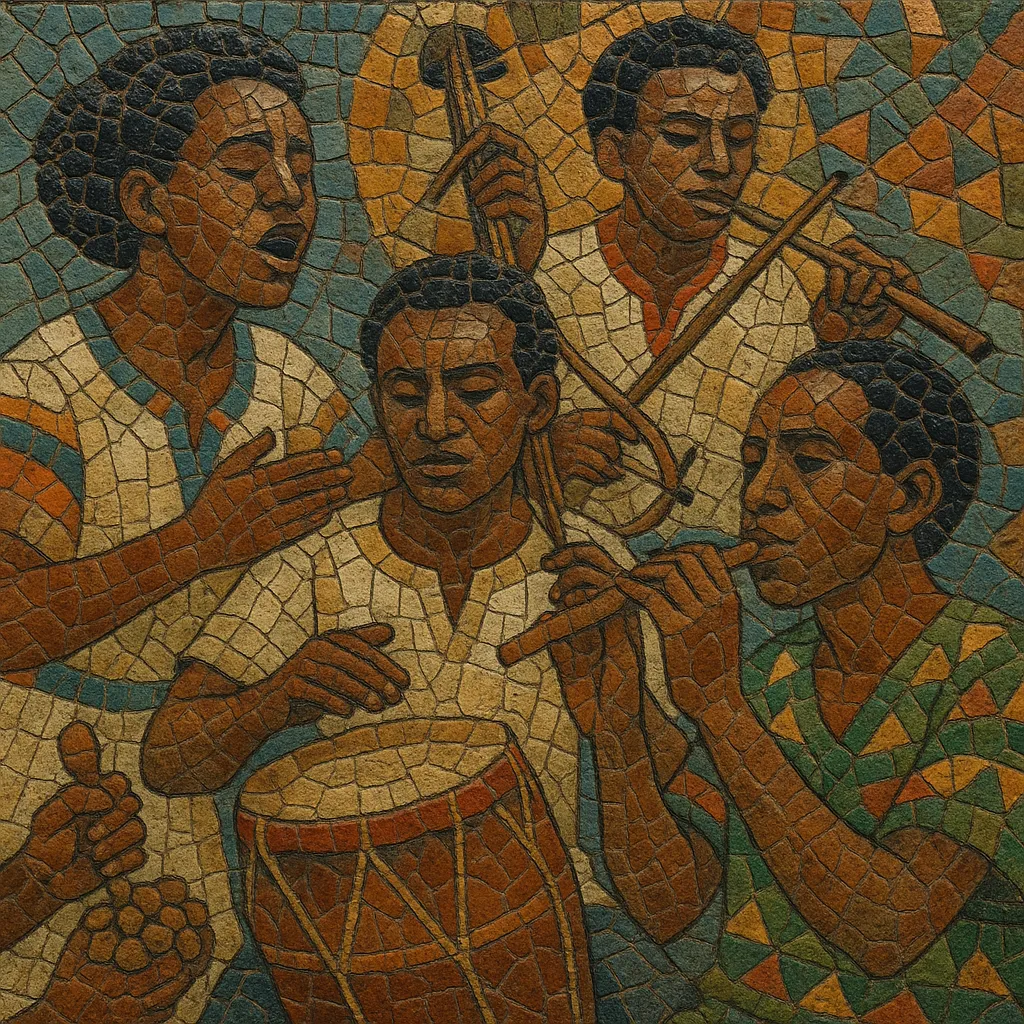Gurage music refers to the traditional and popular musical practices of the Gurage peoples of central-southern Ethiopia. It is best known for driving, layered drum patterns, call-and-response vocals, and celebratory dance songs often performed at weddings and communal festivities.
Typical ensembles combine kebero frame drums, shakers and handclaps with melodic instruments such as masenqo (one‑string fiddle), krar (bowl lyre), and washint (flute). Singers frequently use ululations and percussive vocal accents, while dancers respond with energetic footwork and shoulder movements. Modal melodies draw on Ethiopia’s qenet system, and songs can move between pentatonic modes with striking rhythmic cross‑accents.
In modern settings, these aesthetics have been adapted by urban bands and studio productions—keeping the unmistakable polyrhythmic pulse while adding electric bass, horns, and synthesizers.
Gurage music arose as part of the Gurage peoples’ social life—work songs, praise songs, and festive pieces—long before recording began. Its roles included marking rites of passage, coordinating communal labor, and animating wedding celebrations. Drums, clapping, and responsive group singing shaped a participatory sound where dance and music are inseparable.
In the mid‑20th century, migration to Addis Ababa brought Gurage rhythms into urban clubs and azmari houses. Labels during Ethiopia’s “golden age” of the 1960s–70s issued singles often labeled “Guragigna,” showcasing the style’s propulsive drums and modal hooks alongside horns, electric guitar, and bass. These recordings helped standardize stage arrangements while keeping core dance grooves.
After the 1990s, cassette culture and diaspora scenes carried Gurage music to new audiences. Contemporary bands and producers use drum machines, keyboards, and fuller horn sections, but they typically retain kebero‑driven polyrhythms, handclaps, and call‑and‑response refrains. Today the style thrives at weddings and cultural festivals and continues to inform broader Ethiopian popular music and Ethio‑jazz.


